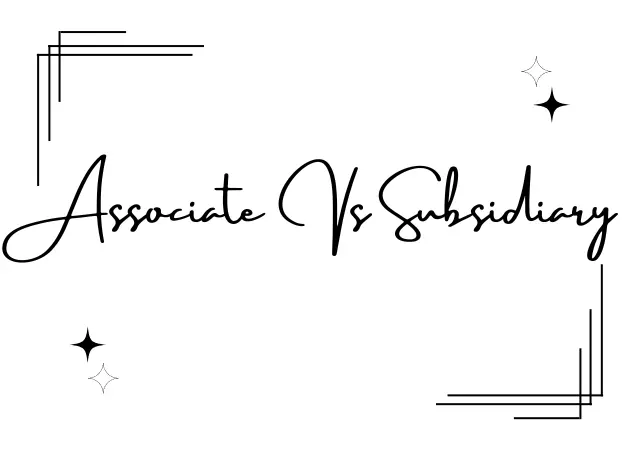The concept Associate Vs Subsidiary EXPLAINS the ‘Associate’ in which another Co. has a SIGNIFICANT ownership stake, and ‘Subsidiary’ that is owned and CONTROLLED by another Co.
Table of Contents
What is an Associate?
An ‘Associate’ a Co. in which another Co. has a SIGNIFICANT ownership stake, but NOT a controlling stake. The exact percentage of ownership required to be considered an associate can vary depending on the specific jurisdiction and industry, but it is generally between 20% and 50%.
The Parent may have some influence over the Associate’s operations, but it does NOT have control.
What is a Subsidiary?
A Subsidiary is a Co. that is owned and CONTROLLED by another Co., known as the Parent. The parent company has the power to make all major decisions for the subsidiary, and the subsidiary is legally and financially separate from the parent.

Associate Vs Subsidiary – (Key Differences)
There are DIFFERENT accounting and tax implications for Associate and Subsidiary.
‘Associates’ are typically accounted for using the Equity Method, where the Parent company records its share of the associate company’s profits or losses on its own financial statements. ‘Subsidiaries’ are fully CONSOLIDATED into the Parent company’s financial statements.
In TAXATION, Associates may be subject to different rules depending on the jurisdiction, but they generally do NOT have the same tax benefits as subsidiaries. For example, a parent may be able to claim tax deductions for losses incurred by its Subsidiary, but it may NOT be able to do the same for losses incurred by an Associate.
The Bottom Line
The concept Associate Vs Subsidiary DEPICTS that it is important for companies to carefully consider the Legal, Financial, and Operational implications. Whether an entity decides to establish an ‘Associate‘ or ‘Subsidiary‘ will depend on its SPECIFIC goals and circumstances.
Chartered Accountant (Institute of Chartered Accountants of Pakistan)
Bachelor of Accounting Honours (Asia e University, Malaysia)